Sony Alpha DSLR-A100 review with DT 18-70mm f3.5~5.6
-
-
Written by Gordon Laing
Sony Alpha DSLR-A100 real-life noise levels versus Canon EOS 350D / Rebel XT
Sony Alpha A100 results continued…
Outdoor / Resolution / Noise / Noise 2 / Corner sharpness / Fringe & macro / Geometry / Vignetting
| Support this site by shopping via these links | |||||||||
To compare noise levels under real-life conditions we shot the same scene using the Sony Alpha DSLR-A100 and Canon EOS-350D within a few moments of each other using their best quality JPEG options, and at each ISO setting. The Sony was fitted with the DT 18-70mm while the Canon was fitted with the 18-55mm EF-S, both set to an aperture of f16 in Aperture Priority mode; f16 was necessary due to the high brightness of the scene. The image left was taken with the Sony Alpha DSLR-A100 at 100 ISO using the DT 18-70mm lens at 26mm f16 (39mm equivalent); the original JPEG measured 2.92MB. The crops are taken from an area just below and to the left of the centre. |
Sony Alpha DSLR-A100 with DT 18-70mm |
Canon EOS-350D with 18-55mm EF-S | |
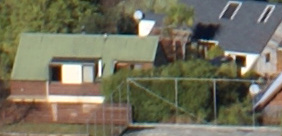 | 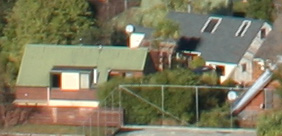 | |
100 ISO, 1/80, f16 |
100 ISO, 1/60, f16 | |
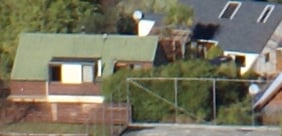 | 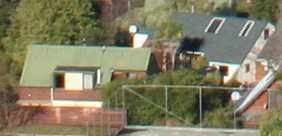 | |
200 ISO, 1/160, f16 |
200 ISO, 1/125, f16 | |
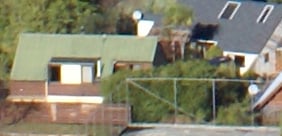 | 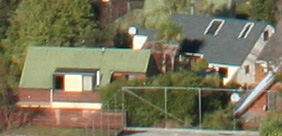 | |
400 ISO, 1/250, f16 |
400 ISO, 1/320, f16 |
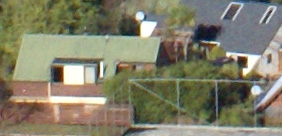 | 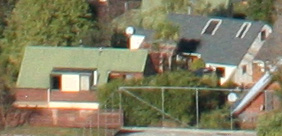 | |
800 ISO, 1/500, f16 |
800 ISO, 1/500, f16 | |
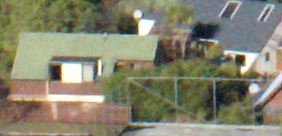 | 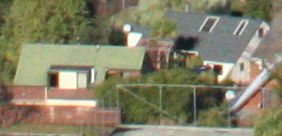 | |
1600 ISO, 1/1000, f16 |
1600 ISO, 1/1000, f16 |
As the ISO is increased, the noise levels become most obvious on the grey roof to the right of the crops – and in line with the studio noise tests on the previous page, these are higher for the Sony A100 at 800 ISO and above. Beyond just increased noise though, detail throughout the A100 crops decreases at higher sensitivities. In particular, detail within the trees in the top left corner and behind the fence becomes noticeably lower on the Sony A100 at higher sensitivities than on the Canon 350D. Indeed the 350D retains an impressive level of detail up to and including 800 ISO, with smearing only becoming obvious at 1600 ISO. The fencing poles are also better defined on the 350D samples. Of course these results are a combination of many factors including lens quality and image processing. We suspected compression was certainly playing a part since during our comparisons with the Canon 350D, it was interesting to note the Sony A100 image files were consistently slightly smaller. For example, the file sizes of the 100 ISO samples here for the Sony A100 and Canon 350D measured 2.92 and 3.04MB respectively. It’s a modest difference, but remember the Sony images also have more pixels in them, so its L:10M Fine mode clearly employs a higher compression ratio than the 350D’s Large Fine mode. This in turn could result in smearing of fine detail. To find out if the A100’s compression was being over-zealous we conducted additional RAW plus JPEG tests. Scroll to the bottom of the page to view these results. Note: we have compared 100% crops from each camera measuring 282×136 pixels. Since the Canon 350D has a lower resolution sensor, its crops therefore represent a slightly larger area relative to the Sony A100. Consequently any artefacts visible on the 350D crops would be slightly larger and more obvious than the A100 if the image was reproduced at the same physical size. In reality though, the actual difference in area is very small. The Sony A100 and Canon 350D crops here represent 7.3% and 8.2% of their total image widths respectively. So while the Sony A100 artefacts would appear slightly smaller than the Canon 350D on prints of identical size, the A100’s noise levels would still be visibly worse at higher sensitivities. |
Sony Alpha DSLR-A100 JPEG versus RAW comparison
To eliminate the effect of Sony’s in-camera processing and compression, we took an additional photo with the A100 set to RAW plus JPEG at 100 ISO; the JPEG file was recorded in the same L:10M Fine mode as used in the other examples. The RAW and JPEG files measured 10.8 and 3.09MB respectively. The RAW file was then processed with Sony’s supplied Image Data Converter SR utility using the camera’s settings for all options including sharpness and white balance. Note the lens aperture was set to f9 for this shot. |
Sony Alpha DSLR-A100 with DT 18-70mm JPEG versus RAW | ||
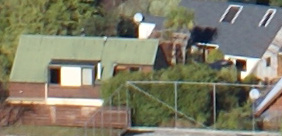 | 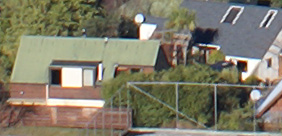 | |
L:10M Fine JPEG, 100 ISO, 1/200, f9 |
RAW conversion, 100 ISO, 1/200, f9 | |
The crop taken from the converted RAW file shows noticeably greater detail than the JPEG processed in-camera; this is most obviously seen in the leaves on the trees and bushes which on the JPEG appear quite smeared in comparison. Clearly to get the most from the A100 and avoid its over-zealous JPEG compression, you’ll need to shoot in RAW. It’s also worth comparing the JPEG crop here with the first on this page to see the effect of the 18-70mm lens set to f16 versus f9; the latter is slightly sharper, no doubt due to diffraction. Ultimately while it’s no surprise to find a RAW file delivering better quality than a JPEG, the 350D crops prove a little less compression (along with better overall processing) can avoid many smearing issues. Consequently we’d have preferred the A100’s L:10M Fine mode to either apply a little less compression, or for the camera to offer an additional SuperFine mode. |




